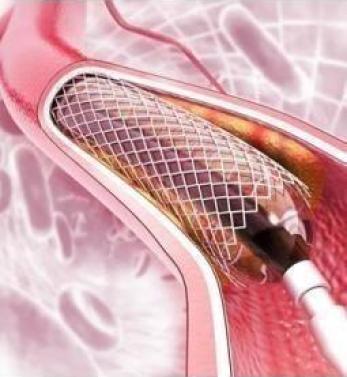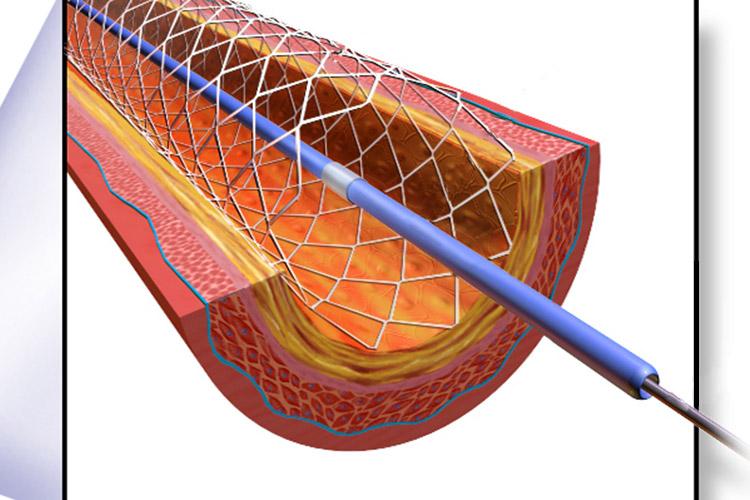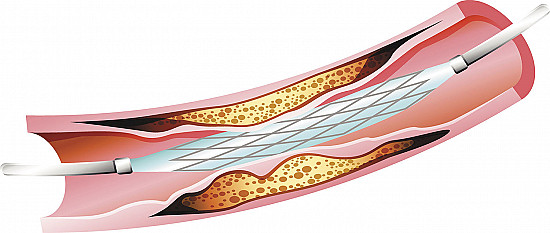

Stents are the name given to the network-shaped tubes made of metal or plastic material according to their structure and displaying the channel feature. It can also be used to open the bile ducts and urinary tract, where the flow of body fluids occurs as a result of formations such as stones or tumors, while ensuring the patency of the blood vessels that are blocked due to blood clots.
Stent materials can be used by coating with certain drug substances specifically for the targeted treatment, or they can be prepared as grafts in large-scale operations. Stents can be kept in the body temporarily or permanently, depending on the type and material of use. Depending on the place of use, the use of drug treatments may be required for the persistence and effectiveness of the stent.
 Why Is Stent Application Made?
Why Is Stent Application Made?
The main purpose of the stents is to ensure that the fluid flow in the applied tissue continues without interruption. Accordingly, it is most commonly used in the clinic to reopen the narrowed blood vessels due to vascular plaques. The coronary vessels of the heart may narrow with the development of plaque as a result of atherosclerosis, and the heart tissue that is deprived of blood support may be damaged over time, paving the way for a heart attack. Thanks to the stent, the plaques are removed and the vessel patency is restored and this opening is tried to be preserved by keeping the stent permanently.
Apart from this, stents can also be used for the following purposes according to the application site:
Ensuring normal vascular patency by removing abnormal enlargements called aneurysms in the vessels of organs, especially the brain,
Prevention of recurrence by removing occlusive substances such as stones in the bile ducts or urinary tract tissues such as ureters,
Protection of the respiratory system by providing patency in the bronchi.
How is the Stent Applied?
Patients should not eat 8 hours before the stent procedure. However, drugs that make bleeding control difficult, especially blood thinners, are discontinued before the operation. In the near-operation period, patients are asked not to smoke and alcohol, to notify the doctor immediately in the presence of infections such as colds, and to follow the physician's instructions for treatment arrangements related to other diseases.
The stenting procedure is not a highly aggressive surgery and is performed under certain imaging techniques. Before the procedure, the major vascular structures in the groin are determined. The stent, which is wrapped around a deflated balloon, is placed in the appropriate position by being directed from the veins in the groin to the relevant vein of the heart. The stent is deployed by inflating the balloon, then the balloon is deflated and removed. After the procedure, the intervention area is sutured and a pressure dressing is applied and followed.
Similarly, in stents placed in extravascular structures, the stent is positioned in the right region with the help of catheters directed outside the body in the light of radiological imaging of the relevant region.

What Should Be Considered After Stent?
Stent application carries some risks, as in any interventional surgery. Accordingly, since the following health problems may develop following stenting, care should be taken in follow-up and treatment:
Allergic reaction to drugs and contrast agents used during the procedure,
Bleeding at the procedure site
Congestion in the applied veins,
Complications such as intravascular coagulation and related heart attack,
Infection at the procedure site,
Obstruction due to substance accumulation in stents applied to extravascular tissues,
Secondary vascular occlusions after stenting.
The decision to apply a stent to patients should be made in collaboration with the physician. The patient's current health problem and the complications that may develop after the stent should be evaluated together, and the procedure that will benefit the patient should be applied with the approval of the physician and with caution. If the patient has health problems such as sensitivity to anesthesia or a tendency to bleeding, necessary precautions will be taken by the physician before the procedure.
After the procedure, it may be necessary to administer anticoagulant medication, which should be used for a long time or continuously, in order to prevent the vascular access from re-narrowing or clotting, especially in stents placed intravenously. Postoperatively, patients should not do heavy exercises, tire their bodies and should not smoke.